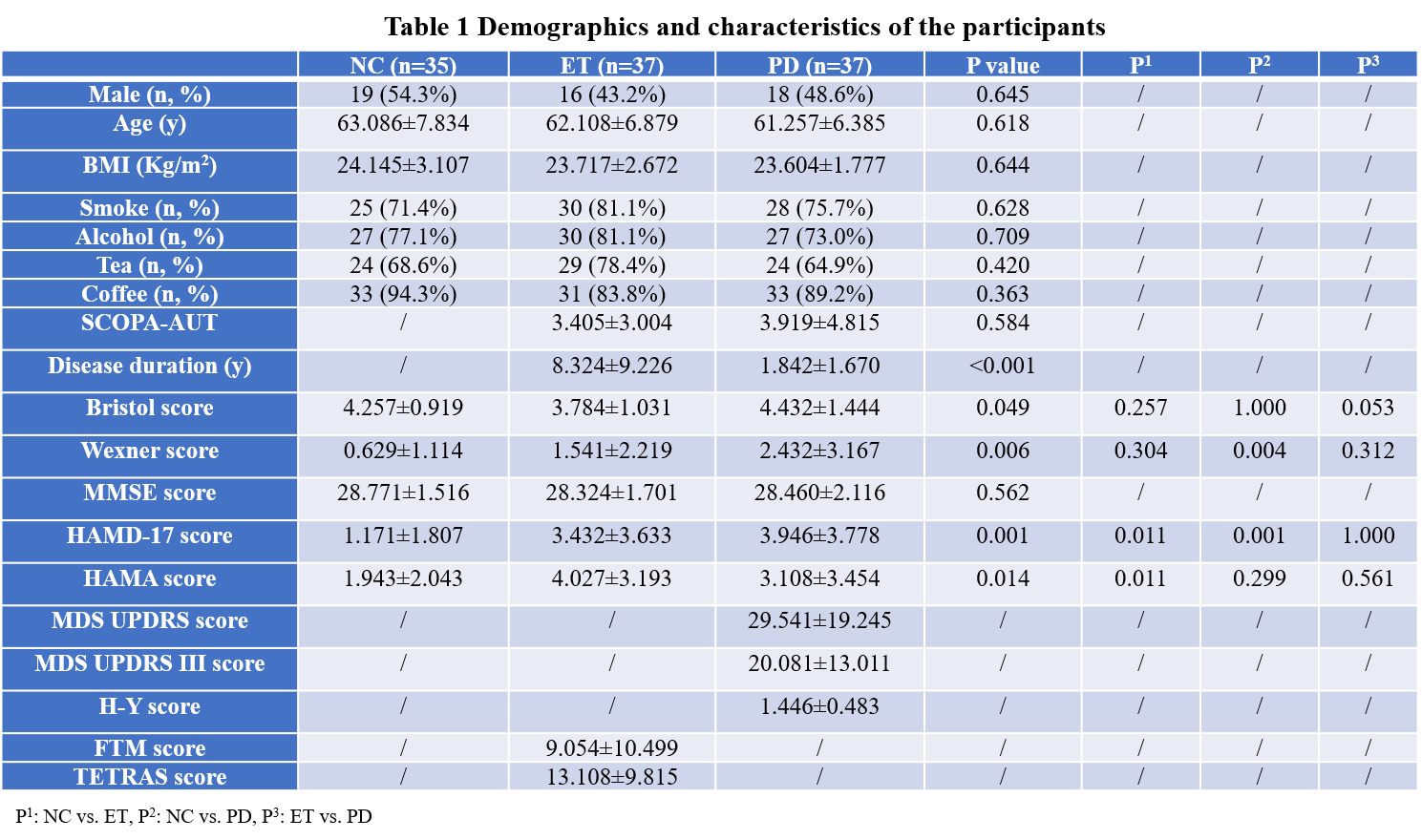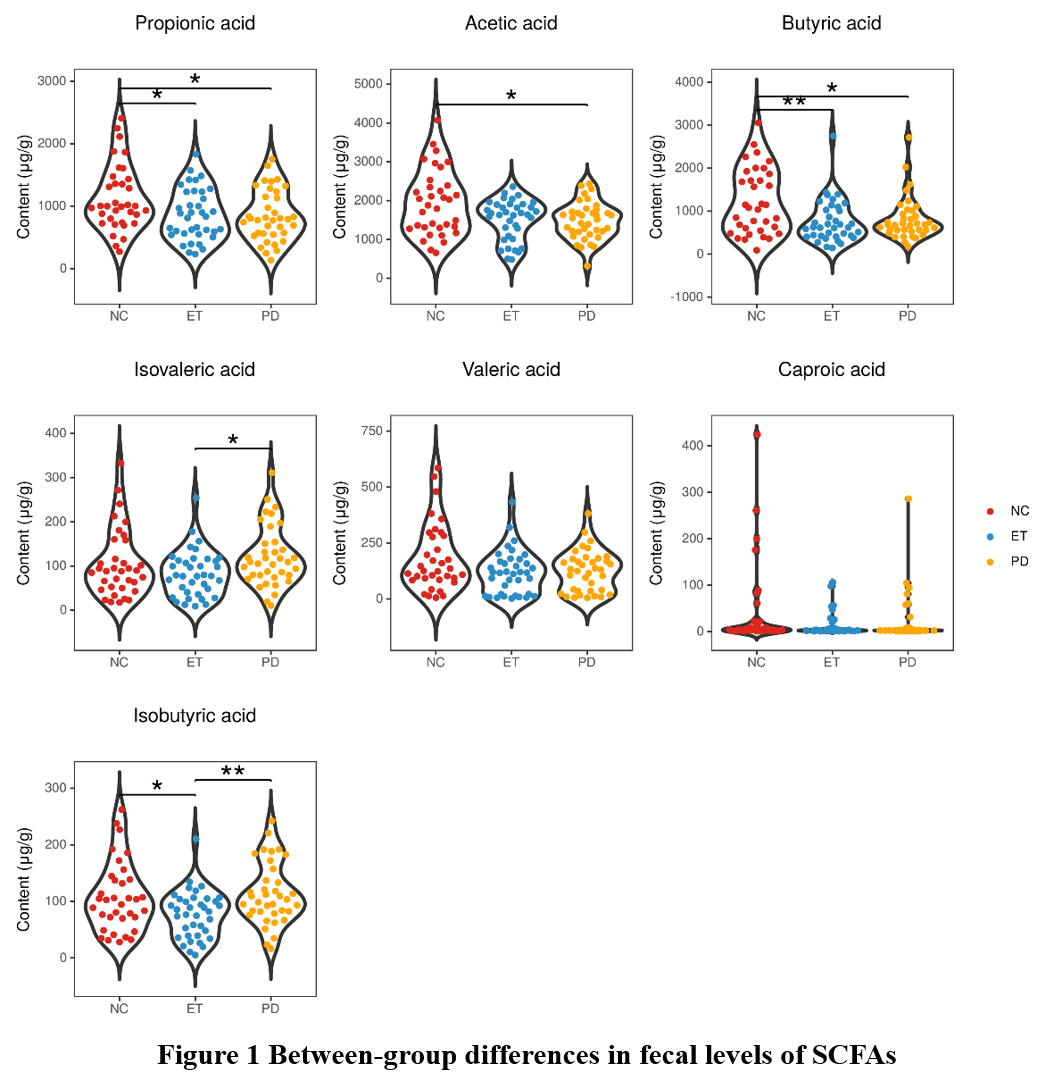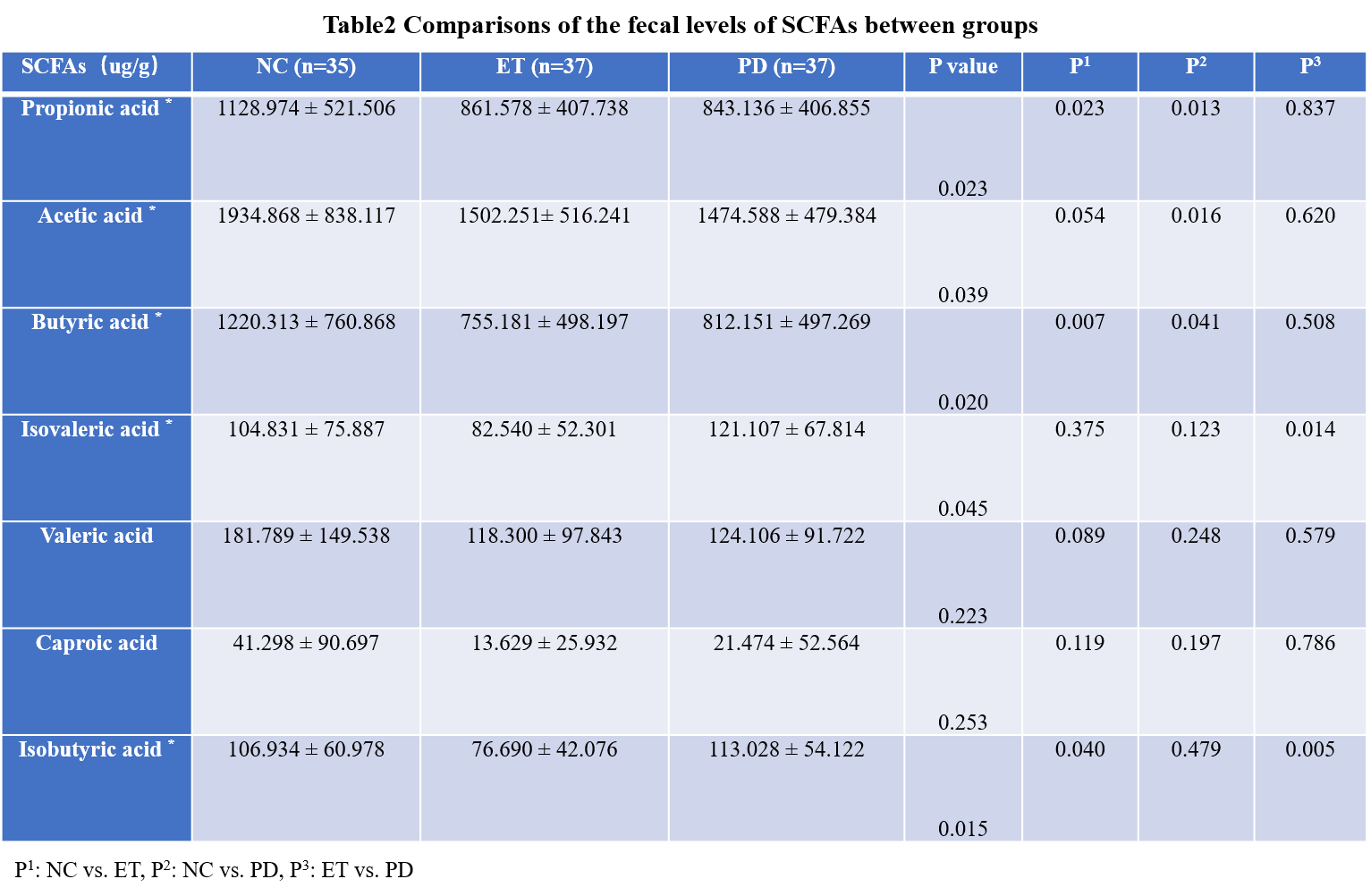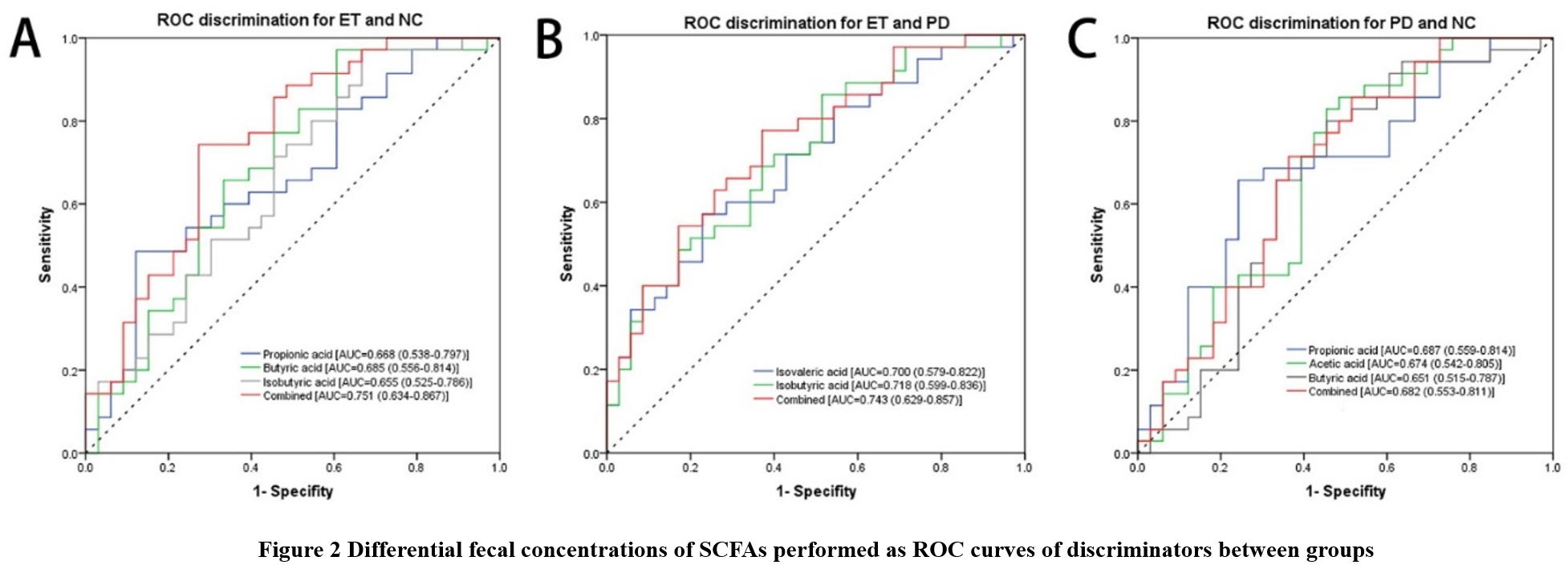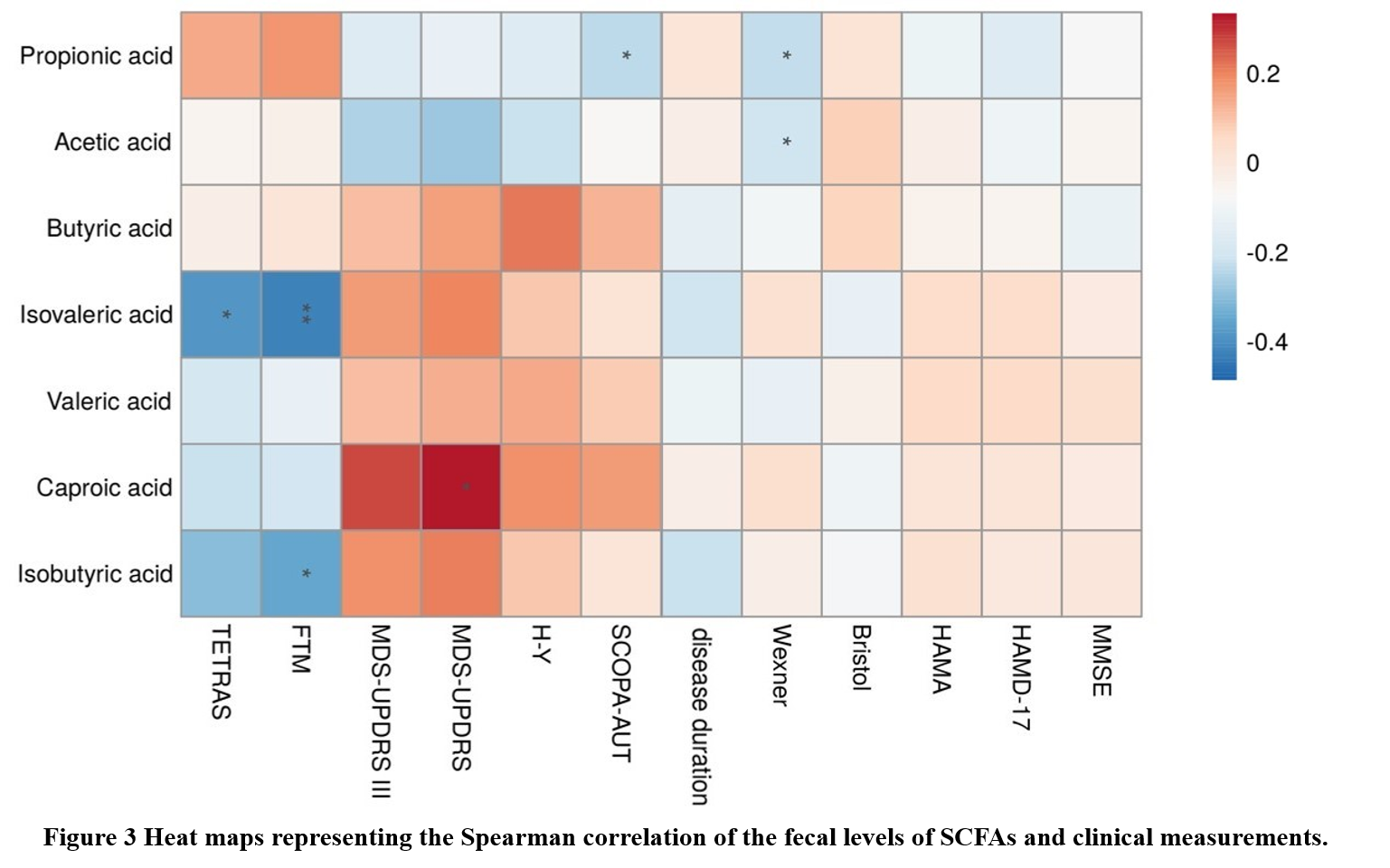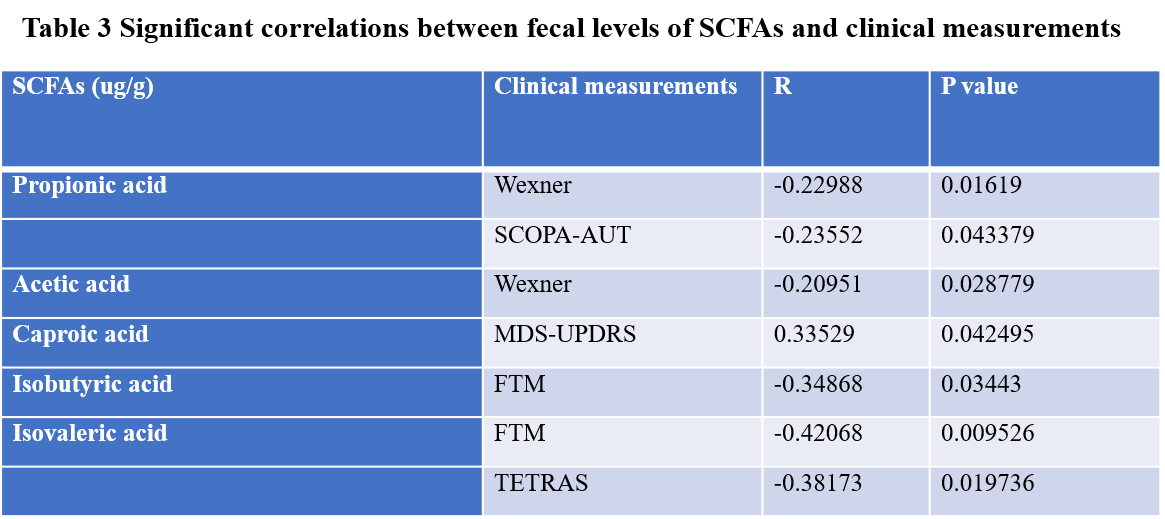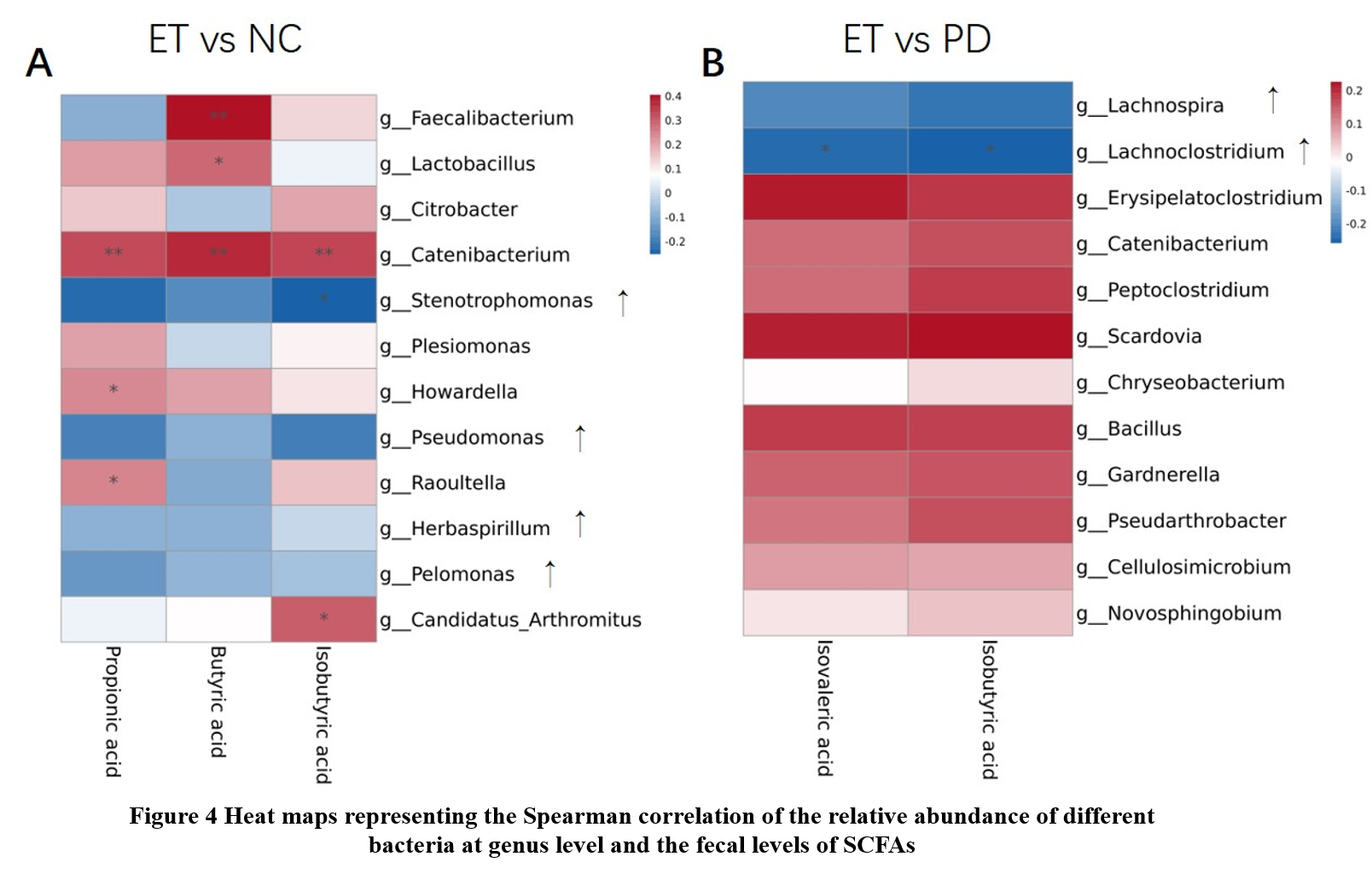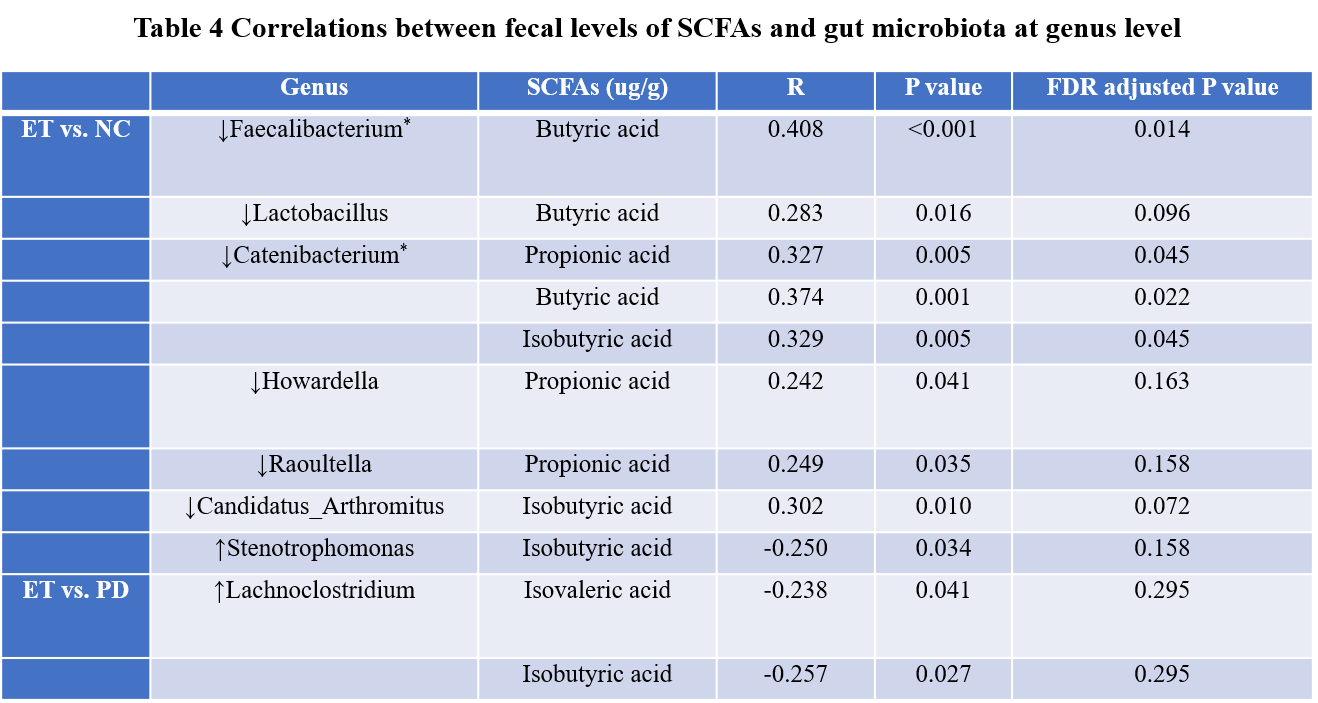Category: Tremor
Objective: To investigate the fecal levels of short-chain fatty acids (SCFAs) in essential tremor (ET) patients, assess their relationships with clinical symptoms and gut microbiota, and identify the potential diagnostic and differential diagnostic ability.
Background: ET is the most common movement disorder and shares overlapping symptoms with Parkinson’s disease (PD), making diagnosis challenging at early stage. SCFAs are produced exclusively by gut microbiota and were reduced in feces of PD patients. Gut dysbiosis in ET patients was firstly identified in our previous study. However, fecal SCFAs levels in ET patients have not been investigated.
Method: 37 ET patients, 37 de novo PD patients and 35 NC were recruited with matched age, gender and BMI. Fecal levels of SCFAs were measured using chromatography and mass spectrometry. Gut microbiota was analyzed using 16S ribosomal RNA gene sequencing. Wexner score, SCOPA-AUT, FTM and TETRAS were measured for constipation severity, autonomic dysfunction, and tremor severity.
Results: ET had lower fecal levels of propionic acid, butyric acid and isobutyric acid than NC. The combination of propionic acid, butyric acid and isobutyric acid could distinguish ET from NC with an AUC of 0.751 (95%CI: 0.634-0.867). ET had lower fecal levels of isovaleric acid and isobutyric acid than PD. The combination of isovaleric acid and isobutyric acid identified ET from PD with an AUC of 0.743 (95%CI: 0.629-0.857). Fecal levels of propionic acid were negatively correlated with Wexner (r=-0.230, p=0.016) and SCOPA-AUT score (r=-0.236, p=0.043). Isobutyric acid were negatively associated with FTM score (r=-0.349, p=0.034). The levels of isovaleric acid were negatively correlated with FTM (r=-0.421, p=0.010) and TETRAS score (r=-0.382, p=0.020). Lowered levels of butyric acid were related to decreased abundance of Faecalibacterium (r=0.408, p=0.014) and Catenibacterium (r=0.374, p=0.022) in ET. Decrease abundances of Catenibacterium in ET were also correlated with lowered levels of propionic acid (r=0.327, p=0.045) and isobutyric acid (r=0.329, p=0.045).
Conclusion: Fecal SCFAs were decreased in ET and correlated to clinical severity and specific gut microbiota changes. The combined fecal levels of propionic acid, butyric acid, isobutyric acid and isovaleric acid may be potential biomarkers for diagnosis and differential diagnosis of ET.
References: [1] Szu-Ju Chen, Chieh-Chang Chen, Hsin-Yu Liao, et al. Association of Fecal and Plasma Levels of Short-Chain Fatty Acids With Gut Microbiota and Clinical Severity in Patients With Parkinson Disease. Neurology, 2022; 8(8):e848-e858.
[2] Musleh Algarni, Alfonso Fasano. The overlap between Essential tremor and Parkinson disease. Parkinsonism Relat Disord, 2018;46 Suppl 1:S101-S104.
[3] Pingchen Zhang, Pei Huang, Juanjuan Du, et al. Specific gut microbiota alterations in essential tremor and its difference from Parkinson’s disease. NPJ Parkinsons Dis, 2022;8(1):98.
To cite this abstract in AMA style:
P. Huang, PC. Zhang, SD. Chen, YY. Tan. Association of fecal short-chain fatty acids with clinical severity and gut microbiota in Essential tremor and its differences from Parkinson’s disease [abstract]. Mov Disord. 2023; 38 (suppl 1). https://www.mdsabstracts.org/abstract/association-of-fecal-short-chain-fatty-acids-with-clinical-severity-and-gut-microbiota-in-essential-tremor-and-its-differences-from-parkinsons-disease/. Accessed March 31, 2025.« Back to 2023 International Congress
MDS Abstracts - https://www.mdsabstracts.org/abstract/association-of-fecal-short-chain-fatty-acids-with-clinical-severity-and-gut-microbiota-in-essential-tremor-and-its-differences-from-parkinsons-disease/

